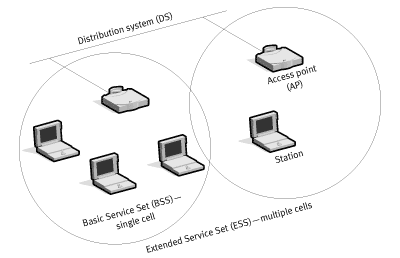hbase java api 介紹 (2)
在很久以前的hbase java api介紹 (1)之後,
今天總算找時間寫了第二篇內容,
在此篇文章中, 將會敘述比較正規的java client寫作方式,
增進讀取hbase的效率, 以下是範例程式:
在程式中, 首先我們宣告一個class作為創造table之用
col.setMaxVersions(1);
同時, 我們也把資料留在記憶體中, 加速存取
這裡要注意, 若是對於大量的NOSQL資料儲存, 請不要做相同的設置,
此外, 在建立table時, 若是table已經存在,
則先disable, 之後drop 所要創建的table,
藉由所宣告的CF表列與table名稱, 我們可以透過此物件創立table
對於put而言, 我們可以藉由宣告一個put物件
並將column的數值填入後, 一起put進入table, 減少建立連線的延遲,
程式如下:
當要get數值時, 我們也可以藉由get物件的宣告,
讀取一部分的row-key中的數值,
注意, 在這裡, 由於get物件中只有col1:qual1和col2:qual3兩個欄位,
因此, col1:qual2是讀不到的...
在hbase程式中, 要多利用(pool.getTable("testTable")).exists(get)來做判斷,
否則若有寫入和讀取衝突時, hbase程式會直接跳出至catch部分
最後是關於delete的部分,
delete是以row為單位, 所以對應的數值是row-key
以上是這一次更新的內容,
以後若還有第三部分, 應該會說明scan和count的程式指令
希望可以有空完成...
今天總算找時間寫了第二篇內容,
在此篇文章中, 將會敘述比較正規的java client寫作方式,
增進讀取hbase的效率, 以下是範例程式:
import java.io.*;
import java.net.*;
import java.util.*;
import java.lang.*;
import org.apache.hadoop.hbase.*;
import org.apache.hadoop.hbase.client.*;
import org.apache.hadoop.hbase.util.*;
import org.apache.hadoop.conf.Configuration;
public class hbasetest2
{
public static Configuration conf;
static
{
conf = HBaseConfiguration.create();
conf.set("hbase.zookeeper.property.clientPort", "2222");
conf.set("hbase.zookeeper.quorum", "master,slave01,slave02");
conf.set("hbase.master", "master:600000");
}
static public void main(String[] args) throws Exception
{
String[] TableFamily = {"col1", "col2", "col3"};
createHBaseTable("testTable", TableFamily);
try
{
HTablePool pool=new HTablePool(conf, 1000);
String key="key1";
Put put=new Put(key.getBytes());
put.add("col1".getBytes(), "qual1".getBytes(), "val1-1".getBytes());
put.add("col1".getBytes(), "qual2".getBytes(), "val1-2".getBytes());
put.add("col2".getBytes(), "qual3".getBytes(), "val2-3".getBytes());
(pool.getTable("testTable")).put(put);
String getResult="";
Get get=new Get(key.getBytes());
get.addColumn("col1".getBytes(), "qual1".getBytes());
get.addColumn("col2".getBytes(), "qual3".getBytes());
if( (pool.getTable("testTable")).exists(get) )
{
getResult = new String((pool.getTable("testTable")).get(get).getValue("col1".getBytes(), "qual1".getBytes()));
System.out.println("GET: " + getResult);
getResult = new String((pool.getTable("testTable")).get(get).getValue("col2".getBytes(), "qual3".getBytes()));
System.out.println("GET: " + getResult);
// getResult = new String((pool.getTable("testTable")).get(get).getValue("col1".getBytes(), "qual2".getBytes()));
// System.out.println("GET: " + getResult);
}
Delete delete=new Delete(key.getBytes());
(pool.getTable("testTable")).delete(delete);
}
catch (Exception e)
{
System.out.println("Well..., something wrong with HBase");
}
}
public static void createHBaseTable(String tablename, String[] families) throws IOException
{
HTableDescriptor htd = new HTableDescriptor(tablename);
for(String fmly :families)
{
HColumnDescriptor col = new HColumnDescriptor(fmly.getBytes());
col.setInMemory(true);
col.setMaxVersions(1);
htd.addFamily(col);
}
HBaseAdmin admin = new HBaseAdmin(conf);
if (admin.tableExists(tablename))
{
System.out.println("Table: " + tablename + "Existed.");
System.out.println("dropTable "+ tablename);
//drop the existing table
admin.disableTable(tablename);
admin.deleteTable(tablename);
}
admin.createTable(htd);
System.out.println( tablename + " created.");
}
}
在程式中, 首先我們宣告一個class作為創造table之用
public static void createHBaseTable(String tablename, String[] families) throws IOException
{
HTableDescriptor htd = new HTableDescriptor(tablename);
for(String fmly :families)
{
HColumnDescriptor col = new HColumnDescriptor(fmly.getBytes());
col.setInMemory(true);
col.setMaxVersions(1);
htd.addFamily(col);
}
HBaseAdmin admin = new HBaseAdmin(conf);
if (admin.tableExists(tablename))
{
System.out.println("Table: " + tablename + "Existed.");
System.out.println("dropTable "+ tablename);
//drop the existing table
admin.disableTable(tablename);
admin.deleteTable(tablename);
}
admin.createTable(htd);
System.out.println( tablename + " created.");
}
在此物件中, 我們限制了所創立的table只記錄一筆timestample的資料: col.setMaxVersions(1);
同時, 我們也把資料留在記憶體中, 加速存取
這裡要注意, 若是對於大量的NOSQL資料儲存, 請不要做相同的設置,
此外, 在建立table時, 若是table已經存在,
則先disable, 之後drop 所要創建的table,
藉由所宣告的CF表列與table名稱, 我們可以透過此物件創立table
對於put而言, 我們可以藉由宣告一個put物件
並將column的數值填入後, 一起put進入table, 減少建立連線的延遲,
程式如下:
Put put=new Put(key.getBytes());
put.add("col1".getBytes(), "qual1".getBytes(), "val1-1".getBytes());
put.add("col1".getBytes(), "qual2".getBytes(), "val1-2".getBytes());
put.add("col2".getBytes(), "qual3".getBytes(), "val2-3".getBytes());
(pool.getTable("testTable")).put(put);
當要get數值時, 我們也可以藉由get物件的宣告,
讀取一部分的row-key中的數值,
Get get=new Get(key.getBytes());
get.addColumn("col1".getBytes(), "qual1".getBytes());
get.addColumn("col2".getBytes(), "qual3".getBytes());
if( (pool.getTable("testTable")).exists(get) )
{
getResult = new String((pool.getTable("testTable")).get(get).getValue("col1".getBytes(), "qual1".getBytes()));
System.out.println("GET: " + getResult);
getResult = new String((pool.getTable("testTable")).get(get).getValue("col2".getBytes(), "qual3".getBytes()));
System.out.println("GET: " + getResult);
//getResult = new String((pool.getTable("testTable")).get(get).getValue("col1".getBytes(), "qual2".getBytes()));
//System.out.println("GET: " + getResult);
}
注意, 在這裡, 由於get物件中只有col1:qual1和col2:qual3兩個欄位,
因此, col1:qual2是讀不到的...
在hbase程式中, 要多利用(pool.getTable("testTable")).exists(get)來做判斷,
否則若有寫入和讀取衝突時, hbase程式會直接跳出至catch部分
最後是關於delete的部分,
delete是以row為單位, 所以對應的數值是row-key
Delete delete=new Delete(key.getBytes());
(pool.getTable("testTable")).delete(delete);
以上是這一次更新的內容,
以後若還有第三部分, 應該會說明scan和count的程式指令
希望可以有空完成...



留言
張貼留言